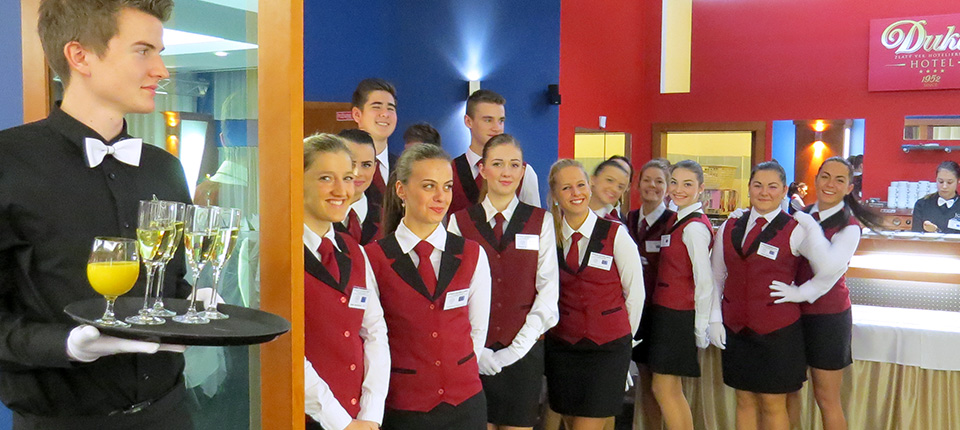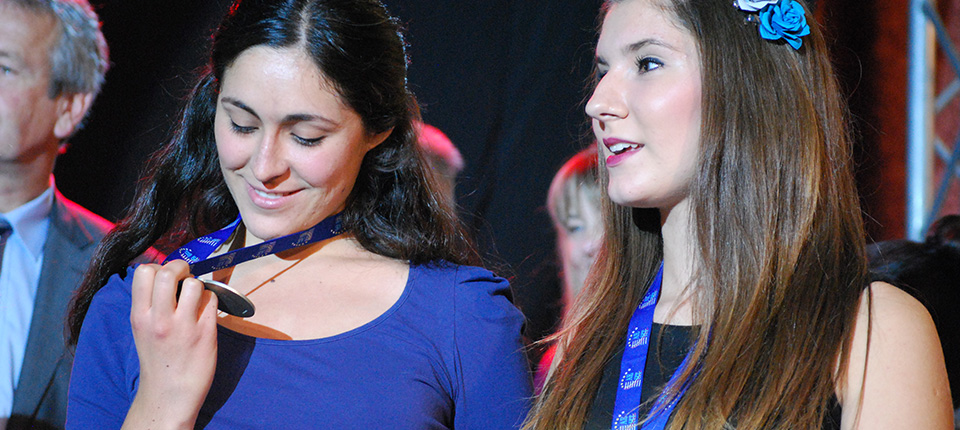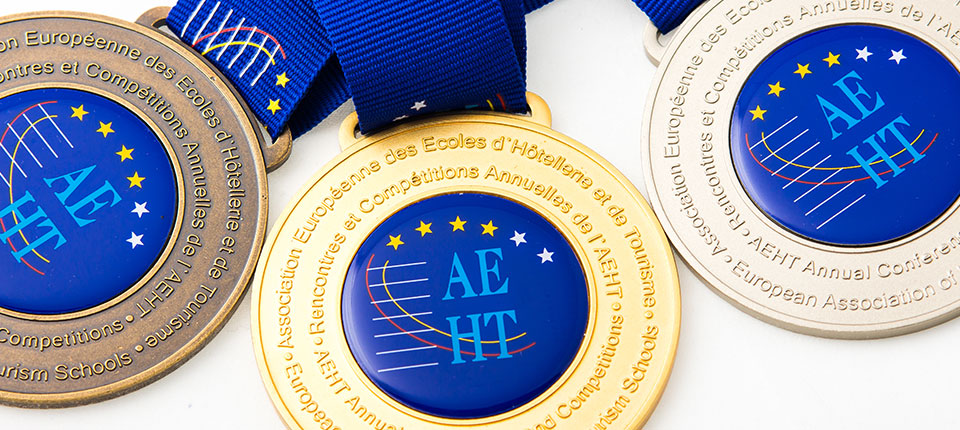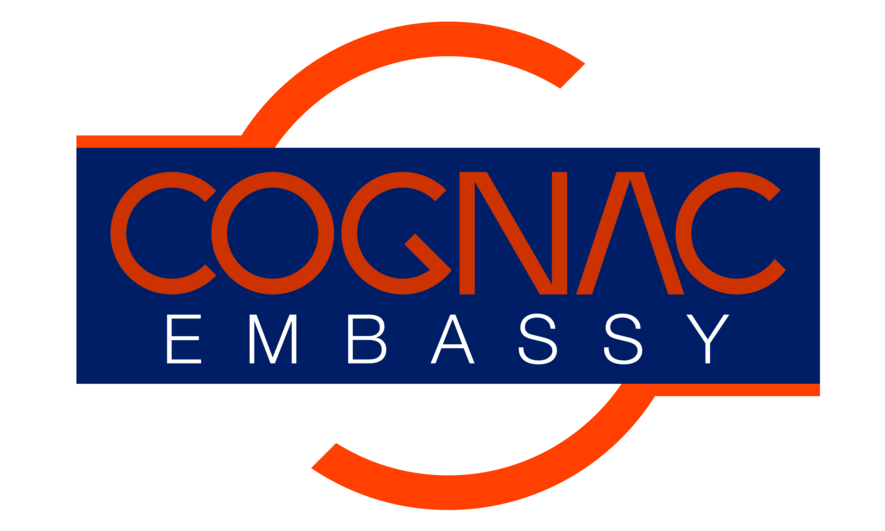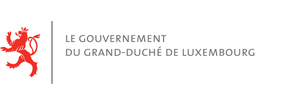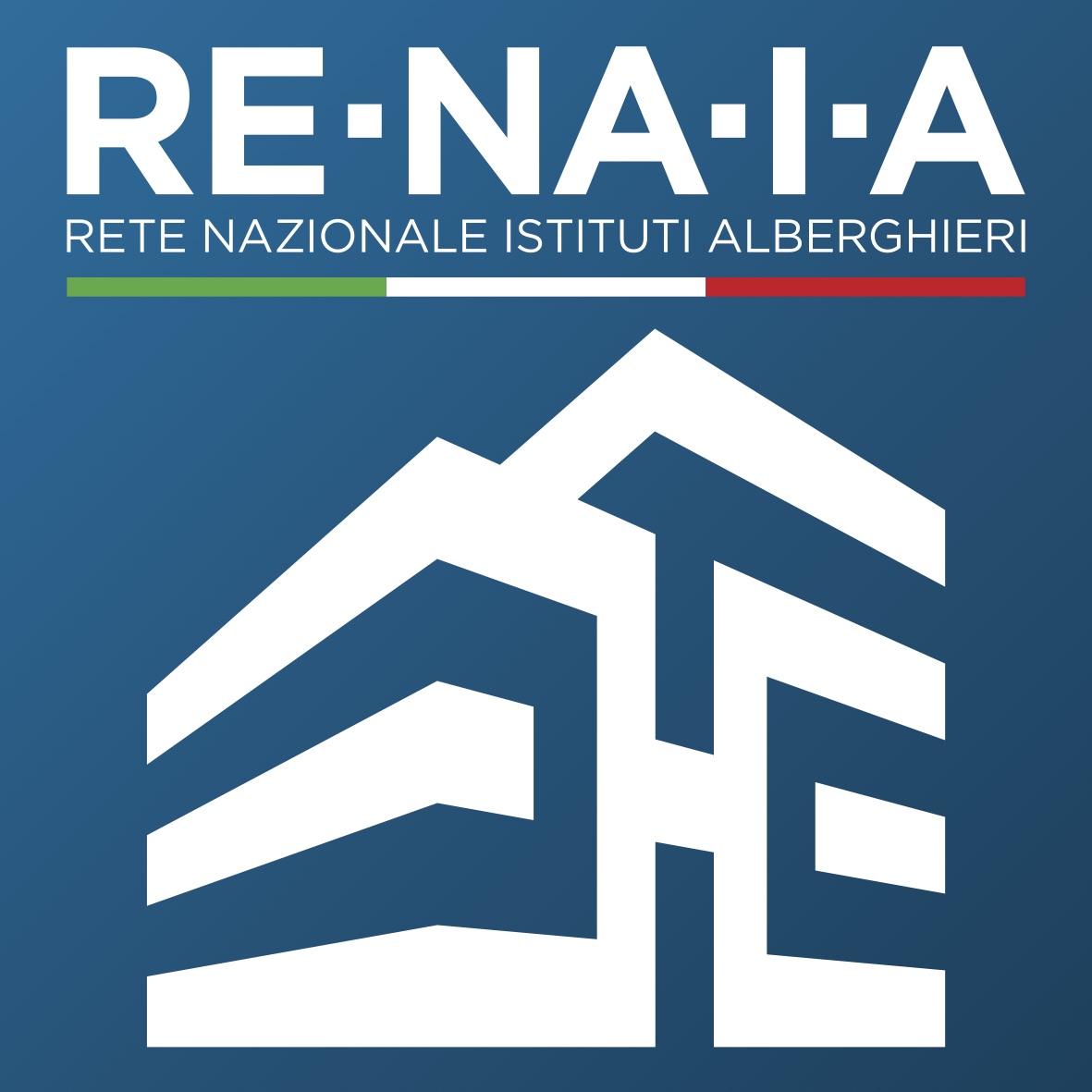From Friday February 16 th to Tuesday February 26 th an AEHT delegation were the guests of the SENA (Servicio Nacional de Aprendizaje) - the Colombian professional training body.
 Casa del Marqués de Premio Real on thePlaza de la Aduana, occupied by the Caribbean Gastronomy School |
The participants were members of the AEHT presidium: Louis Robert (president), Nadine Schintgen (general secretary), John Rees Smith (interpreter) and the vice-presidents Klaus Enengl, Boguslawa Pienkowska and Neeme Rand; they were joined by four delegates from French hotel schools: Michel Gaillot (also an AEHT honorary president and former director of the Saint-Quentin-en-Yvelines hotel school), Patrick Troquenet (Head of Department from Saint-Quentin-en-Yvelines) Jacques Bessou (an international consultant based in Nice), and Bernard Vergier (International projects coordinator at the Marseille hotel school). Our host was Sébastien Longhurst, International Relations Coordinator of the SENA. For part of the visit we were joined by Monica Silva, a journalist from ‘Catering’ magazine.
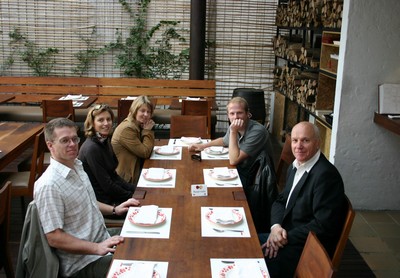 Restaurante Tábula
|
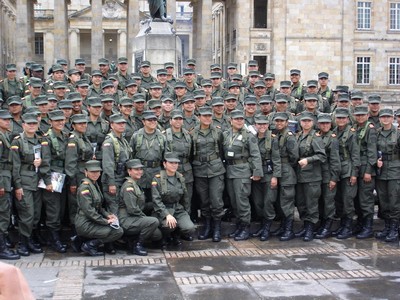 Police Academy (feminine version)
|
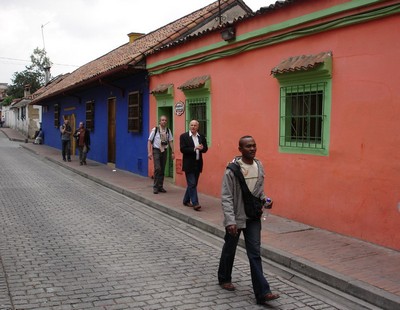 Candelaria district
|
 Cathedral of Bogotá
|
Part of the delegation visited the Candelaria district of Bogotá on Saturday February 16 th; then, joined by the remaining delegates on Sunday February 17 th, and still struggling with jet-lag, we visited Paloquemao (or Palo Quemado) market – what a profusion of colours, tastes and sounds! Not many ‘gringos’ visit the market, and we were treated with amiable curiosity by the stall-holders, who greeted us with the universal ‘a la orden’ (how can I help you). The flowers were not all that unfamiliar, since many are grown for export so appear regularly in florists in Europe. But most of the fruit and vegetables we had never seen before, and the locals were very happy to tell us all about them, to cut them into pieces and distribute them to the group for tasting. An amazing variety of potatoes was on sale (of course – we were in the land where the potato originated) and we tried some tamal – rice and chicken served in banana leaves, as well as the amazing, enormous guanábana (custard apple).
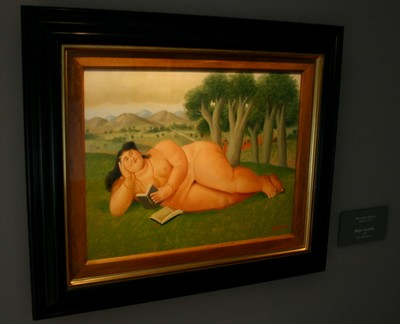 Botero Museum
|
 Paloquemao flower market
|
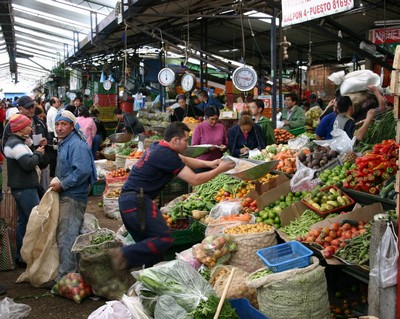 Paloquemao market
|
 Tamal tasting
|
Next on our visit was the Parque Simón Bolívar, a popular Sunday destination for Bogotanos, and next to it the Biblioteca Virgilio Barco: Sébastien explained to us the significance of what in London or Paris would have been a perfectly normal library: the economic divide in Colombia is such that education and culture tend to be elite, so placing in a popular location a resource such as a library with free computer access is a grand social gesture, the beginnings of the massification of culture which we take for granted. We rounded off the morning with a stroll around the ‘arty’ quarter of Usaquén, followed by a delicious fish lunch at Abasto; we made our way back to our minibus via the flea market, and returned to the hotel to try to shake off the jet-lag.
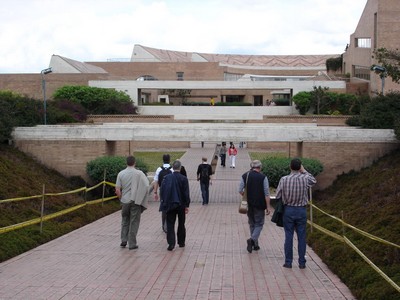 Biblioteca Virgilio Barco
|
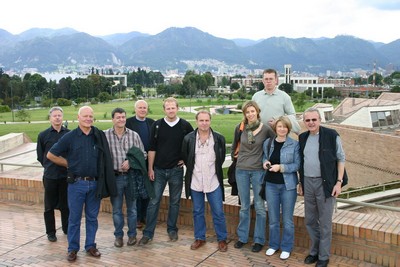 On top of the Biblioteca Virgilio Barco
|
On Monday February 18 th our delegation made its way to the SENA hospitality training centre, where a warm welcome awaited us. Sébastien, with contributions from Julia Gutierrez de Piñeres and Judith Castañeda , made a formal presentation of the SENA (its mission and objectives are summarised at the end of this article), and each member of the AEHT delegation described his or her school and national training system. Following a tour of the building, we were ushered into the dining room for lunch with the Director of the SENA, Dario Montoya; Dario greeted Michel Gaillot like a long-lost friend. After lunch came the ceremonial signing of an agreement between the SENA and the AEHT, at which the former was officially accepted as an AEHT observer member.
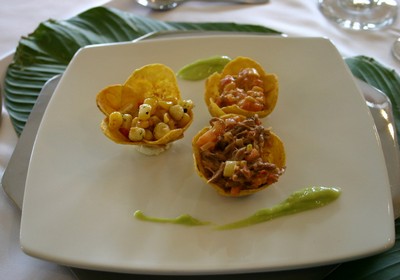 Plantain baskets (hogao, sweet corn, stuffed meet, coriander, roast paprika)
|
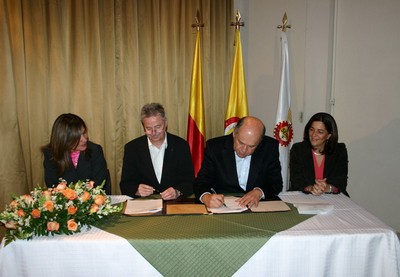 Signing of the agreement
|
Then off to visit the hotel Tequendama (meaning ‘open doors’ in the local Chibcha Indian language) – a Bogotá landmark and centre of the city’s social scene; we were warmly received by the hotel’s managing director, and were very surprised at his title - General Orlando Salazar, who explained that the hotel is owned by the armed forces pension fund!
Dinner that night was Donde Gilles (chez Gilles) – a restaurant normally closed on Monday night, but opened exclusively for us. What a feast – and Gilles Rebierre, the owner, turned out to be from a town near Libourne, as was Jacques Bessou, one of our delegation!
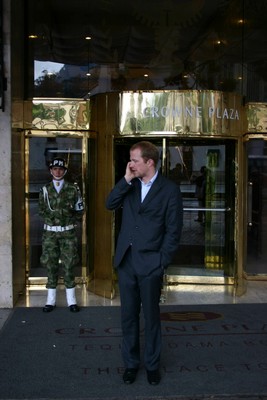 Entrance of the Crowne Plaza Tequendama Hotel
|
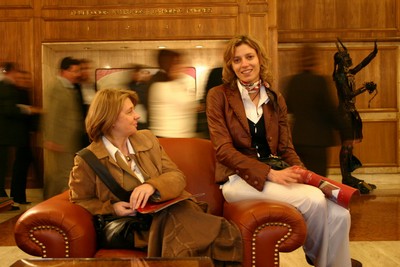 Busy entrance hall
|
Our flight for Armenia, in the coffee growing region, the following morning, Tuesday February 19th was at 06.10, and 05.00 saw our jet-lagged group board a bus for the airport, rather regretting that last cognac the night before. We were met at Armenia airport by a fleet of 4x4s under the command of Carmenza Quintero, director of the Armenia gastronomy school. We swept in through the gates of the beautifully located Finca Espejo, passing a notice warning us 'Ojo, Perro Bravo' (beware of the dog); when we passed the porter's lodge a few minutes later the fierce dog in question bounded up to greet us - it was a miniature poodle!
 Finca EL Espejo
|
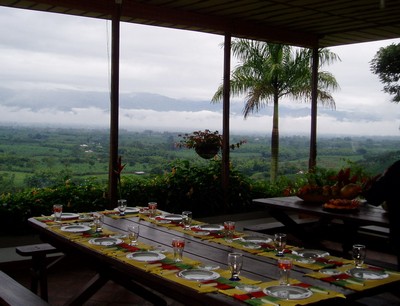 Breathtaking surroundings
|
Parked in the entrance to the house was an 'aula móvil‘ - one of the SENA's famous mobile teaching units (these include boats and tents by the way), this time a fully fitted training kitchen in which SENA students were busy preparing our breakfast and lunch. We sipped our fresh tropical fruit juices looking out over the valley with the city of Armenia in the distance, as parrots flew overhead and humming birds sipped the nectar from the hibiscus flowers on the patio – a scene of perfect tranquillity. We mused about civil strife, drug cartels and kidnappings, and wondered how such a beautiful, peaceful land, with such a smiling, pleasant, caring and hospitable people, could ever have known such horrifying events as had punctuated their recent history. The finca owner took us for a stroll round the estate, showing off his long-eared cattle and the ubiquitous guadua (a local species of giant bamboo) from which bridges, platforms and fences are constructed.
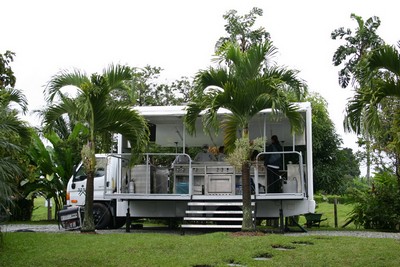 SENA mobile training kitchen
|
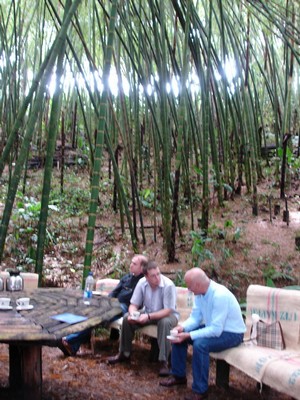 Enjoying a cup of coffee in the middle of a bamboo grove
|
The next part of the programme was the highlight of the trip for your correspondent – a visit to the coffee growing estate of El Agrado, where our guide was Jaime Duque of the Federación Nacional de Cafeteros. Most of us had never even seen a coffee bush before, so we were fascinated to see the whole process of coffee production, from the seedlings growing under glass, then planted out into the coffee plantations; the beans being harvested, shelled, dried, then roasted and tasted in the estate’s laboratory. We were intrigued that, because Colombia has little seasonal climate variation, the same coffee bush bears flowers, unripe berries and ripe fruit at the same time – making harvesting rather complicated. After this first, ‘agricultural’ part, we strolled to the ‘coffee bar’ – rustic tables arranged in a bamboo cathedral, just where a clear spring bubbled from the hillside; and here, in this idyllic setting, Jaime shared with us his infectious enthusiasm for coffee.
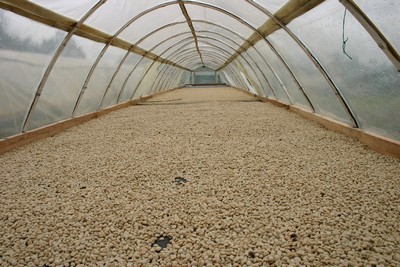 Coffee beans get dried
|
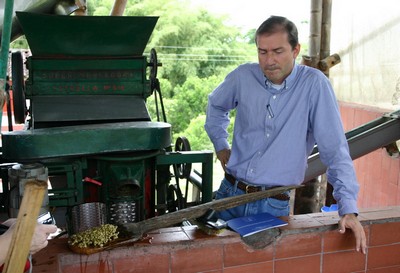 Jaime Duque explaining the proceedure of shelling coffee beans
|
 How to identify coffee defects
|
 Coffee Class
|
Next to the tasting laboratory, where we were introduced to the mysteries of coffee brewing and tasting; many of us found that the approach was as scientific as professional wine tasting, including the need to make a loud slurping sound when assessing the taster. One major difference – no need to spit out the mouthful as with wine!
Tuesday afternoon was spent in the SENA gastronomy school in Armenia, taking part in a round-table discussion on the subject of rural tourism. The audience consisted of eager and bright-eyed SENA trainees and a dozen local hoteliers, some of them clearly spoiling for a fight over student placements.
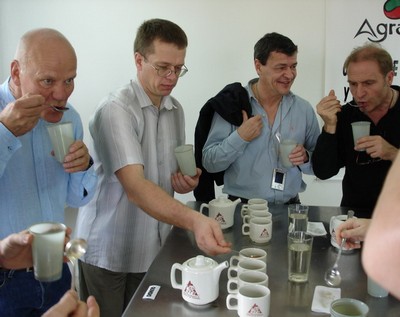 Coffee tasting in the El Agrado laboratory
|
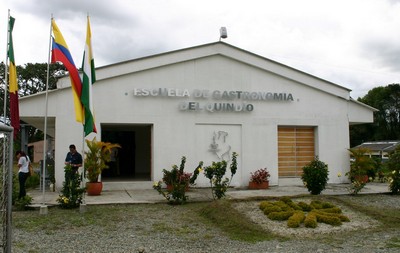 Escuela de gastronomía del Quindio
|
 Carmenza Quintero, Carlos Alberto Aguirre Pérez, Michel Gaillot and Bernard Vergier
|
 Sebastian Longhurst, Nadine Schintgen and Louis Robert
|
That evening the SENA students had worked wonders in their mobile training kitchen, and the AEHT delegation spent a euphoric evening dining on the patio, then swimming, taking Turkish baths and sitting in the hot tub – in the pelting tropical rain!
On Wednesday 20 th it was time to leave our idyllic finca and to drive through the zona cafetera to take our flight from Pereira to Medellín; we booked in at the Hotel Park10 then left at once for the Plaza Mayor and lunch expertly served by yet another SENA team. After inspecting a convention centre catering operation also run by the SENA, we set off through Medellín’s appalling traffic jams to see a truly remarkable SENA installation in Pedregal , a deprived area to the north of the city. This training centre perfectly illustrated the SENA’s social mission – ‘Conocimiento y competitivdad para todos los Colombianos’ – knowledge and competitiveness for all Colombians, especially those living in underprivileged circumstances. We were shown round by two particularly passionate exponents of the SENA mission – Álvaro Ospina, director of the Advanced Manufacture and Design Department, and Carmen, one of his assistants, who was our interpreter. Álvaro explained to us that he had revolutionised the operation of the Pedregal centre, changing it from a teacher-focussed building by removing the internal walls and installing group study spaces where students learned autonomy and collaborative skills.
 Kitchen in the Plaza Mayor Conference Centre
|
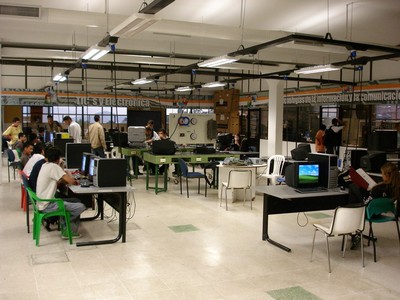 Pedregal Training Centre
|
Our next round table discussion took place on Thursday 21 st in the gastronomy school located at the Antioquia headquarters of the SENA in Medellín. AEHT delegates delivered their presentations, followed by a very lively discussion with an obviously very well-informed audience. We also enjoyed a contribution from Julian Estrada, a researcher in Colombian gastronomy, whose field-work is shortly to be published in his report, Colombia Sal y Dulce. To give an example of the scope of his work, in one piece of field research he had identified no fewer than twelve different types of vinegar in use in a single village.
 SENA training center in Medellín
|
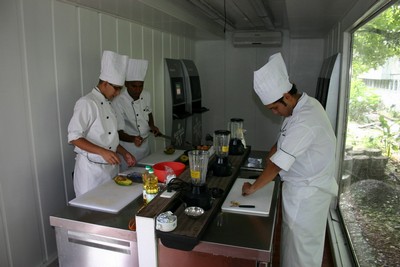 Inside a mobile training kitchen
|
 School staff
|
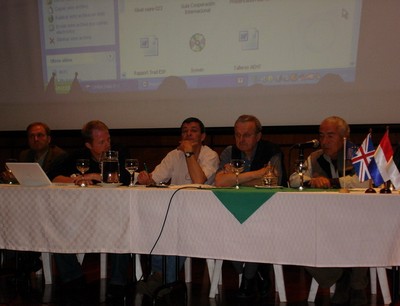 Round table discussion in Medellín
|
And so to a new region of Colombia – the Caribbean coast: we took a flight from Medellín to Montería in the Córdoba department, and drove along the Sinu river, (with a member of the tourist police inside our bus – they are trained by the SENA) with its riverside dwellings and thriving fishing communities; we checked in at the Alcira hotel in Tolú, grabbed our bathing costumes and headed to Dario Montoya’s cabaña (bathing hut – but quite a palatial one!) at the playa del Francés (Frenchman's beach); we swam in the warm sea, and as the sun set over the ocean we drank beer, nibbled plantains and cheese, and contemplated the future of the AEHT while watching the waves crash onto the palm-fringed beach.
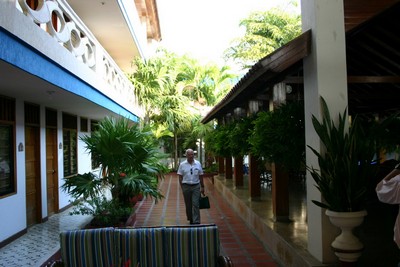 Alcira hotel
|
 SENA Golfo del Morrosquillo hotel school
|
 Martin Ospina
explaining us how to cook in a clay oven |
 Frenchman's beach
|
We were never short of surprises on this trip: the Tolú SENA Golfo del Morrosquillo hotel school had prepared a banquet for us, and the evening turned out to be worthy of García Marques in every respect: following the delicious dinner of cazuela de mariscos (sea-food casserole, many of the ingredients of which had no doubt been swimming in the sea a few metres away early that same morning) we were treated to some ceremonies: first we were given the freedom of the town of Tolú by the Mayor, Sr Alonso González: each member of our delegation was presented with a large brass key by a delightful group of little girls – some of them extremely nervous; when I tried to kiss the presenter of my key, she ran off and had to be retrieved to complete her duties. Then came the poetess – she declaimed her raunchy verse in a deep, hormone-laden voice, to loud applause from our delegation; the sensuous verse finally defeated Sebastian’s gifts as an interpreter, but this did not prevent us from catching the erotic drift of the recital.
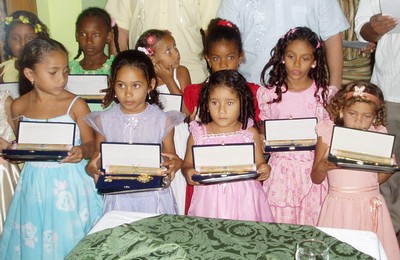 Presentation of the Keys to the Town to the Guests of Honour
|
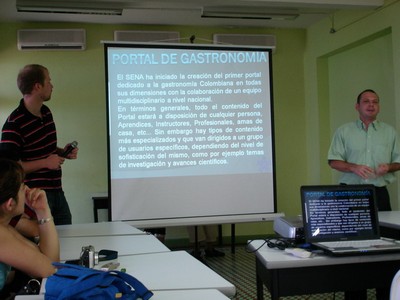 The SENA’s Colombian Gastronomy Portal
|
On Friday 22 nd, once we had shaken off the effects of the previous night’s rum concoctions, we set off for a visit of school, followed by presentations from staff and local officials, including a fascinating description of a project to create a ‘gastronomy portal’ intended to record Colombia’s rich gastronomic traditions, still largely handed down by oral tradition. Then a short bus-ride to Ciénaga la Caimanera (Crocodile Creek) and a ride in three canoes through the mangrove swamps to a wooden platform where refreshments were served – among them oysters which our guides had plucked from the water minutes before. They were small and sweet, served to the more daring delegates with a dash of peppery sauce and orange juice.
 |
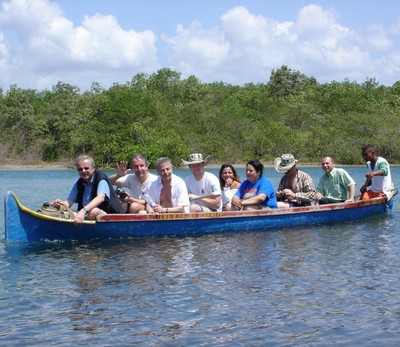 |
 |
 |
|
In the Ciénaga la Caimanera (Crocodile Creek) in good company
|
|
Then another meeting with local journalists, a delicious lunch, then a bus-ride to our final destination – the lovely colonial city of Cartagena de Indias where we checked in at the El Marqués Hotel Boutique hotel for the final phase of our Colombian adventure. Cartagena was the most important port of the Spanish American empire, and all the booty looted from the Indians and destined for Spain had to pass through the city – frequently raided, burned and besieged by foreign pirates and corsairs. Within the impressive fortifications lies a beautiful colonial town, with balconies adorned with flowers, cool arcades (where once slaves were sold) and inviting inner courtyards.
 At the Sofitel Santa Clara Hotel in Cartagena
|
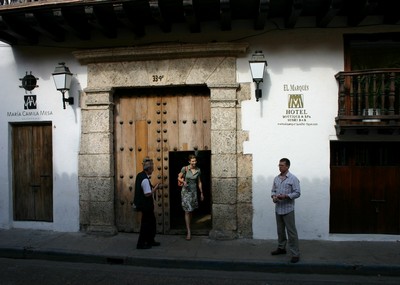 El Marqués Boutique Hotel
|
We climbed into our horse-drawn carriages (the drivers are trained by the SENA of course!) for a tour of the city, then made our way to the Baluarte (‘bastion’) bar for drinks and dinner in the romantic moonlight.
Saturday 23 rd began with a visit to the Cartagena premises of the SENA – a historical building on the Plaza de la Aduana, the Casa del Marqués de Premio Real. We were given a warm welcome by the SENA regional director, Nora Luz Salazar then treated to a presentation from the Cartagena secretary for Tourism Luis Guillermo Martinez. Next came a presentation from SENA’s Francisco Cervantes on SENA’s tourism training activities in Cartagena – among them training of tourist police, of carriage-drivers and of beach vendors – taking place in specially erected tents on the beach! We visited the premises, drank coffee, then heard a presentation from Jacques Bessou , Wolfgang Latorre (Pedagogical coordinator of the Bogota Training Centre) and Nancy Cabrera (A famous Colombian chef currently employed by the SENA as a national advisor) describing a project on training accreditation being carried out in collaboration with the Nice hotel school in France.
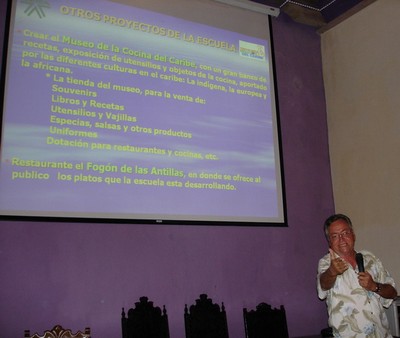 Rafaël Martínez, Director of the Caribbean Gastronomy School
|
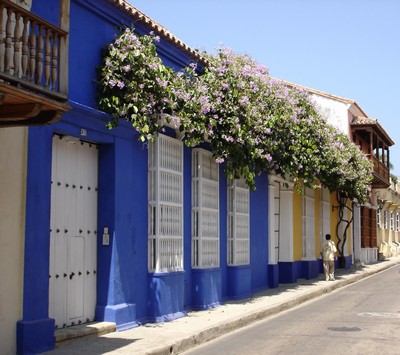 Typical narrow street in enchanting Cartagena
|
Next a quick visit to the Sofitel – installed in a former convent – a delicious lunch of cazuela de mariscos at the DianaMar restaurant (with a very special coconut sauce) and some light shopping before a much needed siesta in preparation for the evening’s festivities – a sort of finale for a Colombian adventure.
 Sofitel Santa Clara Hotel, a former convent dating from 1621 and a charity hospital
|
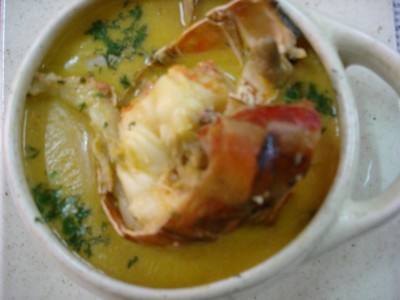 Amazing cazuela de mariscos served at DianaMar
|
The Cartagena SENA had pulled out all the stops for our last night – the first-floor terrace, with a plunging view over the city, had been prepared for our final banquet; as we sipped out casis espumoso, the musicians filed in and gave us a rousing concert of cumbia on their ‘gaita’ instruments , which they manipulated with consummate skill. Then the energetic dancers rushed on, leaping around in athletic movements to loud applause. Dinner was of the high quality we had come to expect, and was followed by exquisite miniature desserts. The more robust members of the delegation made their way to a tavern to listen to more Caribbean music.
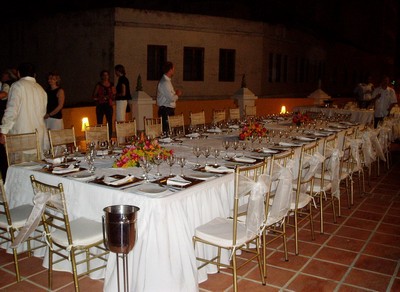 Final banquet on the first-floor terrace
|
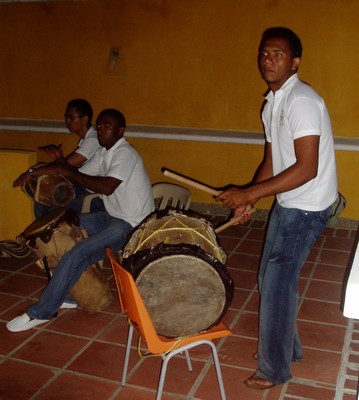 Concert of cumbia given on ‘gaita’ instruments
|
All good things must come to an end: on Sunday February 24 th we left the tropical heat of Cartagena and flew back to Bogotá; some of us had to catch flights back to Europe, while other headed for the SENA once again for a final debriefing.
The AEHT is very grateful to Sebastien Longhurst for his great efficiency in organising this first AEHT overseas mission (we should emphasise that the members of the AEHT delegation paid for their own flights to Colombia, and that the SENA met all our expenses in Colombia). Sébastien is one of those enviable citizens of the world, moving effortlessly from one language and culture to another, and equally at home chairing complex debates and drinking beer with the boys; he is youthful, tireless, relaxed, inspirational, and the SENA is very fortunate to have such a dedicated proponent of its admirable social mission. Well done Sebastian.
The SENA’s mission
Today, the SENA, through its learning centres, reaches out to the entire country and offers a very diverse range of services to students young and old as well as to national and foreign companies. Our three main missions are:
- to support competitiveness of the Colombian productive sector through adequate high level training of the workforce,
- to answer the most urgent needs of the communities in terms of education and knowledge,
- to take part in technological development, support entrepreneurship and innovation.
 SENA’s slogan
|
The SENA, through its 116 training centres all over the country, has trained over 5 million people in 2007, thereby being the largest vocational training institution in the Americas. The SENA offers long and short training in all technical fields, according to the needs of the Colombian market.
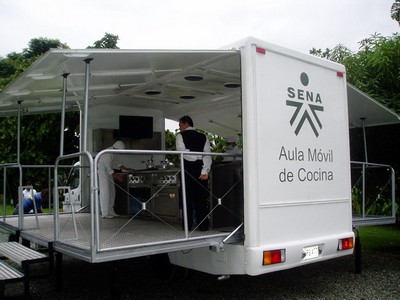 Mobile Classroom and training kitchen
|
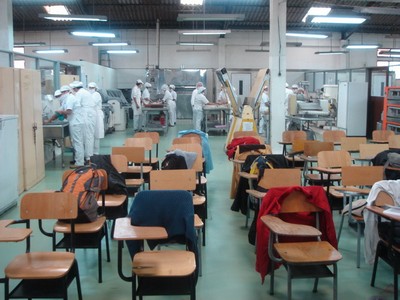 Pastry class
|
The SENA is today a key partner in the strengthening of the competitiveness of all Colombian entrepreneurs, which are the SENA’s source of funding, and the main public institution involved in the construction of social capital, as all its training is provided at no cost for the students and benefits widely to poorer groups of the Colombian population.
A model in terms of vocational training in America, the SENA maintains a wide range of international relations through the implementation of technical cooperation projects in all sectors. The alliance with the AEHT is a central feature of the SENA’s work in rising quality standards in the Colombian tourism industry.
Text: John Rees-Smith
French translation: Nadine Schintgen
Pictures: Nadine Schintgen, Klaus Enengl, John Rees-Smith



